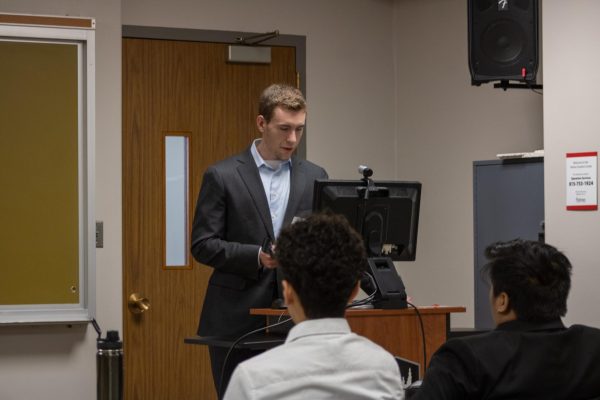The Big Bounce
February 5, 2004
Elmore Leonard has been writing novels about crime for more than 30 years — and for 30 years, Hollywood has been making half-assed attempts to bring Leonard’s novels to life.
There have been a few bright spots. In 1997, John Travolta and director Barry Sonnenfeld brought “Get Shorty” to life. In 1998, Quentin Tarantino turned “Jackie Brown” into a cult classic.
-“The Big Bounce,” one of Leonard’s original works, has been turned into not one, but two films. The first, made in 1967, stunk of mediocrity, and the latest is absolutely dreadful.
The newest adaptation stars Owen Wilson as Jack Ryan, a charismatic con man/burglar in your typical heist movie. After landing in Hawaii, Ryan lands a job with a local judge (Morgan Freeman). The new job finds Ryan in touch with sexy young Nancy (Sara Foster), who Ryan tries to win over. The trouble is, Foster is involved romantically with a variety of men, one a local real estate tycoon (Gary Sinise) and the other his personal assistant (Charlie Sheen).
In an 89-minute short story, Sara ropes Jack into a plan to steal $200,000 from the real estate tycoon, and the others in the plot seem to be involved mysteriously as well. The question is how and why are these other characters in this film? How are they going to tie into the heist?
“The Big Bounce” fails on so many levels that it’s best we take it from the drawing board. Let’s say that you are an aspiring filmmaker or even a veteran like “The Big Bounce” director George Armitage, and you were attempting to make the next great heist picture. Unless you were a complete nimrod, you’d be forced to follow these key “heist movie” rules:
Rule No. 1: We must be interested in your characters. It’s one thing to have a charismatic, funny actor of the moment to play your hero/anti-hero. But, the audience has to care whether your hero is going to make it out with the money, let alone his or her life.
In most cases, we know that things are going to turn out rosy for our main character, but there has to be that little edge that keeps us the slightest bit unsure. For example, in “Payback,” we knew that Mel Gibson had to form a scheme to make it out with his money. But as he was being beaten with bats and sledgehammers, we had to wonder — will he escape with his $70,000?
Rule No. 2: Make sure your “big score” is a big score. These days, an audience is not going to be that excited over $200,000. You can be given that much by telling Regis Philbin your first name.
Rule No. 3: Get to the point, doofus! We should be educated to the nature of your “big score” within the first 30 minutes of a two-hour picture. At that point, the wheels should be turning, and we should be guessing who’s trying to screw who over. To spend 40 minutes of a 70-minute film without setting up your “score,” as “The Big Bounce” does, is the single biggest mistake in heist movie history.
Rule No. 4: Respect your audience. If the average Joe can pick apart your plan in a matter of seconds, not minutes, it’s probably best that you bring the development team back into the board room. Spoiler warning: Make sure your plan comes down to something a bit more complicated than killing the guy who owns the money. A simple murder should be quicker than 89 minutes.
Rule No. 5: Here’s a shocker — choose a decent script! You could attempt to fill a bunch of plot holes with a hipster, ensemble cast, but without some interesting plot twists or clever dialogue, you’ll be left with an extremely bored audience stuck gawking at your leading man’s mangled nose.
Well, aspiring filmmakers, you can choose to follow these rules. Or, you can choose to break each and every one, send your star-studded movie into oblivion (along with your career) and fail to break the top 10 in your first weekend at the box office.
The choice is yours.












